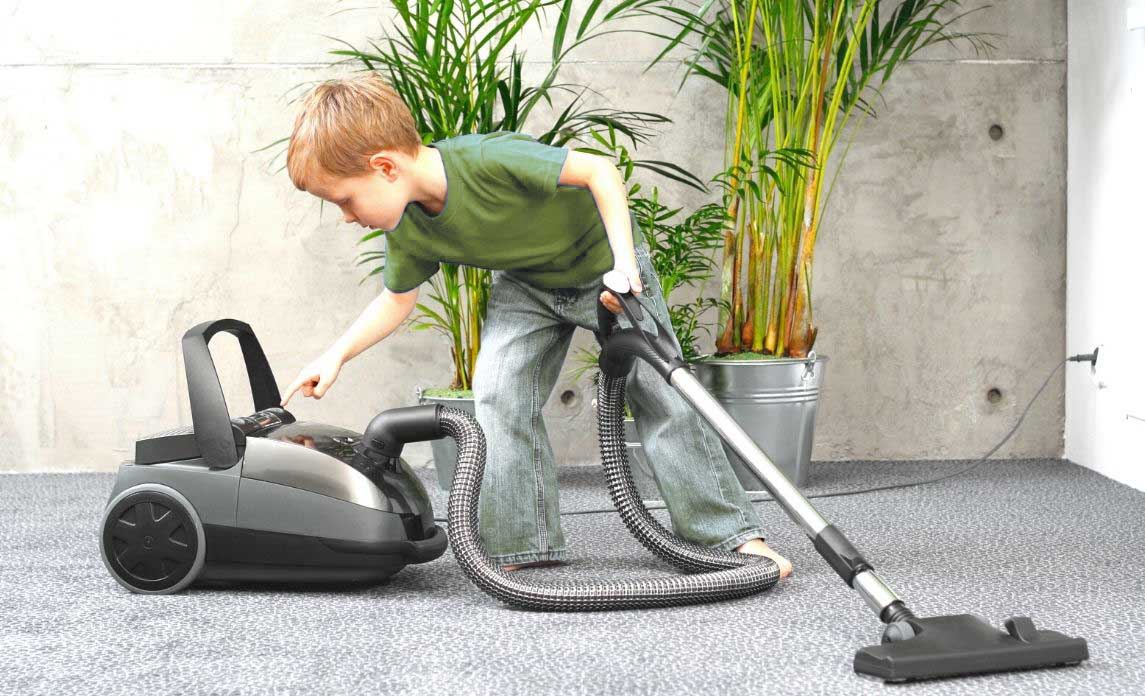Vacuum. Hoover. Lux. No matter how you call it, the vacuum cleaner is arguably the quintessential cleaning appliance. Homeowners have a wealth of choice among handheld, canister, bagged, or robotic models to keep their floors dust-free; meanwhile, commercial cleaning companies often have multiple units capable of industrial-level performance to clean not just floors but also carpets, drapes, and even walls.
Before the vacuum cleaner became as accessible and as ubiquitous as it is today, it first went through quite the journey. Here’s a quick peek at the history of the vacuum cleaner.
The Beginning: Manual Vacuum Cleaners
While vacuum cleaners might feel like a modern invention, their roots can actually be traced back to the 1800s. Specifically, in 1860, Daniel Hess of West Union, Iowa, invented a device he called a “carpet sweeper.” The apparatus used a combination of bellows for suction and a rotating brush for gathering dust.
In 1868, Ives W. McGaffey invented the “Whirlwind,” which featured a hand-cranked fan and a belt to form a rather bulky sweeping machine. There was also a similar sweeper designed by Melville R. Bissell in 1876, which featured brushes connected to wheels. (Bissell remains one of the leading vacuum and cleaning product companies in the United States.)
The Revolution: Powered Vacuum Cleaners
It was at the tail-end of the 19th century when powered cleaners made an appearance. In 1898, John S. Thurman submitted U.S. Patent No. 634,042, a patent for a “pneumatic carpet renovator” powered by a combustion engine and blew dust into a canister. This machine was a little too heavy, and it had to be transported by a horse-drawn wagon when customers requested a home cleaning.
Meanwhile, Corrine Dufour received patents in 1899 and 1900 for a blown-air system that is also reportedly the first to use an electric motor. Later, in 1901, British engineer Hubert Cecil Booth and American inventor David T. Kenney both designed powered cleaners; Booth was believed to have coined the term “vacuum cleaner.”
Booth’s design was powered by a combustion engine, which used air pumped through a cloth filter to suction dirt and dust. Like earlier models, it was a little on the heavy side and had to be transported via a horse-drawn wagon. Meanwhile, Kenney’s powered by a steam engine. It was a monstrosity that weighed 4,000 pounds, although it had pipes and hoses designed to reach farther and higher areas.
The Future: Portable Vacuums, Robot Vacuums, and Beyond
Booth’s invention caused much controversy during its day, particularly its disruption to London’s streets. Still, he persevered to prove his vacuum cleaner’s effectiveness. Most famously, Booth cleaned Buckingham Palace with his machine. He was also able to remove 26 tonnes of dust from the Royal Mint and Crystal Palace, which had been ravaged by an outbreak of spotted fever during World War I.
From there, the popularity of Booth’s vacuum soared. Even Kaiser Wilhelm II of Germany and Tsar Nicholas II of Russia purchased vacuum cleaners! Wealthy households also bought their own vacuum cleaners in response to the lack of domestic help at the time.
The subsequent development in the colourful history of the vacuum cleaner came in 1905 when Walter Griffiths invented a cleaning device that was more portable than ever. A year later, James B. Kirby created a vacuum cleaner—dubbed the “Domestic Cyclone”—that used water to clean up the dirt.
Then, in 1908, James Spangler from Canton, Ohio, created a portable vacuum cleaner that looked like a broomstick but with an electric fan, a box, a cloth for filtration, and, most importantly, a pillowcase that served as a dust-collection bag attached to the handle. Spangler later sold the patent to William Hoover, bringing about the colloquial term “hoover” that is now widely associated with the vacuum cleaner.
Over the years, more and more models of vacuum cleaners appeared in the market. From wet vacuums that can also suck up liquid spills to multipurpose vacuums such as those that came with floor polishing capabilities, appliance manufacturers continued to refine and reinvent the vacuum cleaner.
Then, in 1996, Swedish household appliances manufacturer Electrolux released the first-ever robotic vacuum cleaner. Named “Trilobite,” it garnered quite a lot of interest in the market despite its few issues with detection and collisions. It was finally discontinued around 2005.
Nevertheless, the Trilobite sparked the revolution for robot vacuums, including Dyson’s DC06, iRobot’s Roomba, and Neato Robotics’ XV-11 just to name a few. Thanks to technology, these robot vacuums continued to evolve. In fact, while these appliances were initially developed for home use, there are now robot vacuums that can clean larger spaces like hotels and offices. There are even robotic cleaners that can be used in hospitals, thanks to their disinfection capabilities.
With their big influence on how we now approach domestic and commercial cleaning, it can be a little difficult to imagine a world without vacuum cleaners. Thankfully, as technology continues to develop, we can only expect to have more advanced vacuum cleaners in the future.


